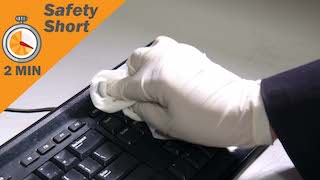

As a family, coronaviruses are common across the globe. This safety short...
MORE INFO </> Embed
</> Embed
As a family, coronaviruses are common across the globe. This safety short outlines some of the control measures that can be taken to prevent their spread.
RUNNING TIME: 2 Minutes
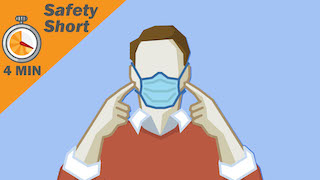

Face Masks are an effective control measure that can be used to control...
MORE INFO </> Embed
</> Embed
Face Masks are an effective control measure that can be used to control the spread of Coronaviruses. This safety short gives a quick overview of common mask types and how to use them correctly.
RUNNING TIME: 4 Minutes
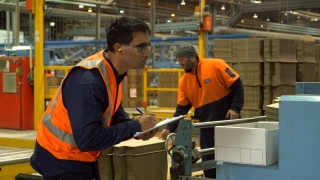

In simple terms a risk assessment requires the identification of workplace...
MORE INFO </> Embed
</> Embed
In simple terms a risk assessment requires the identification of workplace hazards and an evaluation of the risks they present.
The purpose of an overall workplace risk assessment is to establish whether the level of risk arising from workplace activities is acceptable, or whether additional measures need to be taken to control workplace hazards to further reduce or remove unacceptable risks.
The program includes the following Elements of a Risk Assessment:
Regardless of the hazards present, the proper application of the risk assessment process will result in a safer workplace.
RUNNING TIME: 18 minutes
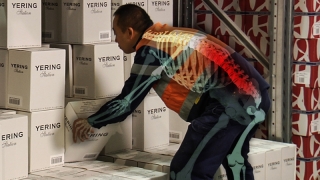

What is manual handling? Simply, manual handling is the movement of items...
MORE INFO </> Embed
</> Embed
Simply, manual handling is the movement of items by human energy.
Manual handling includes lifting, holding, pushing, pulling, shifting and lowering. In fact, any form of human exertion could be included – with or without the use of mechanical aids.
The steps to deal with manual handling can often be addressed by following through a series of questions. This process, the hierarchy of control measures asks the following:
Manual handling contributes directly to a significant percentage of work related accidents and injuries. Manual handling is an issue that must be addressed as an ongoing subject in the workplace.
RUNNING TIME: 12 Minutes
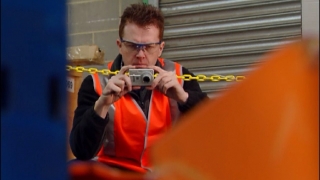

There are laws and regulations that require the investigation and...
MORE INFO </> Embed
</> Embed
There are laws and regulations that require the investigation and reporting of certain types of accidents. Insurance requirements also lead to many Accident Investigations as do potential claims at common law. However, from an Occupational Health & Safety point of view, the main aim of Accident Investigations is not to fulfil these legal and insurance obligations, but rather to prevent recurrences of the same or similar accidents.
Accident Investigations therefore should be regarded as an important part of accident prevention.
This program covers:
Learning why and how accidents occur is fundamental to making improvements in both working conditions and operational methods.
The Accident Investigation process will reduce the number of workplace accidents and should be regarded as an important component of any workplace health and safety strategy.
RUNNING TIME: 12 Minutes


Some workplace hazards are obvious: when there is a risk of physical...
MORE INFO </> Embed
</> Embed
Some workplace hazards are obvious: when there is a risk of physical injury in the workplace, it can be relatively easy to identify and address. But work can also carry risks to mental health.
This program examines the various ways stress can affect members of an organisation as well as potential methods for combatting it.
Topics included in the program:
Work-related stress is not always the easiest of workplace hazards to identify. But being aware of the potential risks, and moving pro-actively to prevent stress taking hold, will help minimise the chances of stress-related illness.
RUNNING TIME: 11 Minutes


Asbestos was once a widely used material: cheap, strong, fire and water...
MORE INFO </> Embed
</> Embed
Asbestos was once a widely used material: cheap, strong, fire and water resistant, and sound-absorbent, it was valuable in many applications – from building to automotive manufacturing to a range of fire resistant products.
Asbestos is a naturally-occurring mineral, which exists in various forms, including white, blue and brown asbestos. But what all forms of asbestos have in common is the thin fibres which the substance is made up of. It is these fibres that pose a threat to humans – when the fibres are inhaled, they can cause serious damage to the lungs.
This program covers:
This program has been produced to be shown to all personnel who may potentially come across asbestos in the workplace.
RUNNING TIME: 11 Minutes
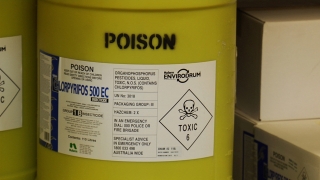

Chemicals are a fact of life. All living things are made from chemicals...
MORE INFO </> Embed
</> Embed
Chemicals are a fact of life.
All living things are made from chemicals and in fact we depend on chemistry for our very existence.....everything from the ground we walk on , to the air we breathe is made from chemicals and chemical compounds.
Every workplace, office, factory, warehouse or plant, uses chemicals to some extent or other. Chemicals range from mild cleaning agents through to highly corrosive, flammable and poisonous substances that are used for different processes and applications.
This program includes:
The safe handling and storage of all chemicals regardless of where they are used requires a commitment by everyone to follow safe work procedures. The realisation of the risks and an ongoing program to minimise the hazards will reduce accidents and make your workplace a safer workplace.
RUNNING TIME: 15 Minutes


It should be the priority of every organisation, and every individual...
MORE INFO </> Embed
</> Embed
It should be the priority of every organisation, and every individual within an organisation, to protect the health and safety of their colleagues and the public, and to ensure their workplace minimises environmental damage, in all its forms.
This program examines how organisations can be aware of their impact on the environment and methods that can be implemented to reduce environmental damage.
Topics included in the program:
Knowing the ways in which your workplace can affect the environment, and staying aware of the ways you can prevent environmental damage from your work, is the first step to creating a more eco-friendly workplace.
RUNNING TIME: 11 Minutes
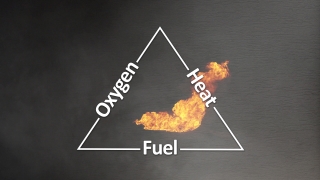

For hundreds of years fire has been used as a means of improving our...
MORE INFO </> Embed
</> Embed
For hundreds of years fire has been used as a means of improving our lifestyle. We use it to change the shape of metal, turn a solid into a liquid, and a liquid into a gas. We use it as a source of light, heat and energy. But fire can also be the source of destruction, injuries and fatalities.
This program examines scientific facts about the ways in which fire and flammable vapours behave as well as important procedures that can be implemented to prevent the occurrence of fires.
Topics included in the program:
Following established Safe Work Practices will help to ensure not only less likelihood of fires and explosions but also less chance of other accidents or injuries occurring.
RUNNING TIME: 12 Minutes
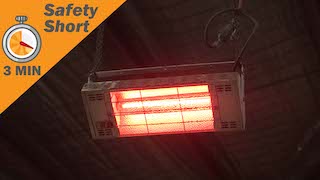

Fire can be the source of extreme destruction, serious injuries and many...
MORE INFO </> Embed
</> Embed
Fire can be the source of extreme destruction, serious injuries and many fatalities. This safety short outlines some of the prevention measures that can be taken to avoid fires.
RUNNING TIME: 3 Minutes
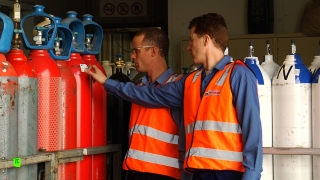

Gas cylinders supply a wide variety of gases for a multitude of different...
MORE INFO </> Embed
</> Embed
Gas cylinders supply a wide variety of gases for a multitude of different industrial, medical and domestic purposes. Most people instinctively appreciate that there are hazards associated with gas bottles and cylinders.
Included in this program:
Safety Data Sheets, safe work procedures and advice from the manufacturer and your supervisor should ensure the safety of all concerned with compressed gas cylinders.
RUNNING TIME: 15 Minutes


Gas cylinders supply a wide variety of gases for a multitude of different...
MORE INFO </> Embed
</> Embed
Gas cylinders supply a wide variety of gases for a multitude of different industrial, medical and domestic purposes. This safety short gives you some general guidelines to apply when handling gas cylinders.
RUNNING TIME: 2 Minutes
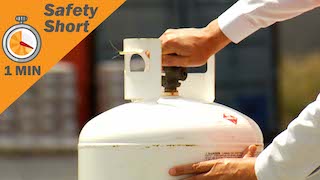

Gas cylinders supply a wide variety of gases for a multitude of different...
MORE INFO </> Embed
</> Embed
Gas cylinders supply a wide variety of gases for a multitude of different industrial, medical and domestic purposes. This safety short gives you some checks to perform before using gas cylinders.
RUNNING TIME: 1 Minute
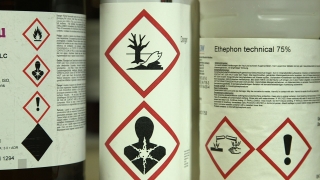

Every year, vast quantities of chemicals are sold and shipped, for use in...
MORE INFO </> Embed
</> Embed
Every year, vast quantities of chemicals are sold and shipped, for use in workplaces around the world.
And, with a global level of trade comes a need to ensure that the hazards pertaining to chemical products are clearly communicated - regardless of where in the world those products are being put to use.
While national laws and regulations relating to chemicals may be similar, they are often different enough to require multiple sets of Labels, Safety Data Sheets, and other information when being traded internationally.
All this creates the potential for confusion - which, when dealing with hazardous chemicals - could have disastrous consequences in the workplace.
Developed at the UN level, the Globally Harmonised System of Classification and Labelling of Chemicals (or GHS for short) aims to develop a single, globally harmonised system to address:
This program provides an overview of these elements as your workplace makes the transition to the GHS.
DURATION: 13 Minutes
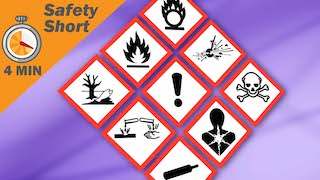

Every combination of class and category classification under the GHS,...
MORE INFO </> Embed
</> Embed
Every combination of class and category classification under the GHS, requires a unique combination of label elements, including: Pictograms, Signal Words, and Hazard Statements. This safety short gives you a quick overview of these elements.
RUNNING TIME: 4 Minutes
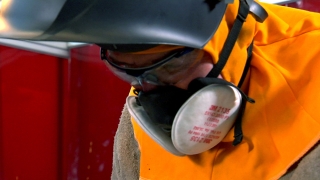

In many workplaces the potential for the inhalation of hazardous...
MORE INFO </> Embed
</> Embed
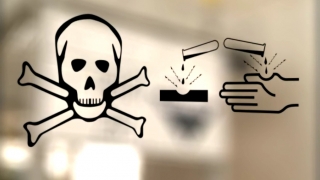

There are literally thousands of different substances used in the...
MORE INFO </> Embed
</> Embed
There are literally thousands of different substances used in the workplace.
Cleaners, adhesives, paints, solvents, pesticides, inks, lubricants and fuels are just some examples. And of course, they come in different forms: powders, granules, solids, liquids and gases.
This program covers:
The objective of this program is to highlight the major hazard areas associated with the use of hazardous substances and by so doing, increase awareness of the standards for worker responsibility in observing and being active in daily safety procedures.
RUNNING TIME: 10 Minutes
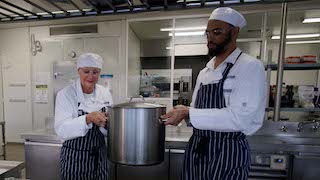

Workplaces where food is prepared or served contain a range of hazards that...
MORE INFO </> Embed
</> Embed
Workplaces where food is prepared or served contain a range of hazards that require particular care and attention to maintain good health and safety, not only for the public but also for the staff.
Some of these hazards are similar to those found in other workplaces, whereas others are specific to food-related workplaces.
This program covers:
The food industry features a wide range of unique hazards, but the risks that these hazards present can be minimised when proper attention is paid to health and safety in the workplace.
The likelihood of accidents and injuries can be greatly reduced by ensuring the implementation of, and continuing commitment to, safe work practices and procedures.
RUNNING TIME: 22 Minutes
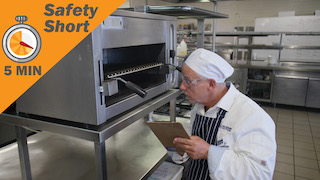

Cleaning up spills as soon as they occur is key to minimising workplace...
MORE INFO </> Embed
</> Embed
Cleaning up spills as soon as they occur is key to minimising workplace accidents
This safety short gives you a quick overview about control measures that can be undertaken to reduce accidents in a food preparation environment.
RUNNING TIME: 5 Minutes
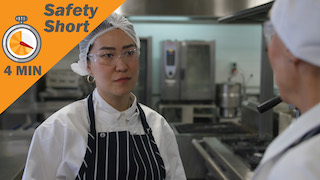

The most common causes of injury when preparing food are slips, trips and...
MORE INFO </> Embed
</> Embed
The most common causes of injury when preparing food are slips, trips and falls;
incorrect manual handling procedures; burns, and exposure to harmful
substances. Other concerns include cutting tasks as well as exposure to heat and
noise. This safety short gives you a quick overview of what safety hazards to look out for in a food preparation environment.
RUNNING TIME: 4 Minutes


Hygiene is a major concern wherever food preparation is being undertaken....
MORE INFO </> Embed
</> Embed
Hygiene is a major concern wherever food preparation is being undertaken. If
contaminated food is ingested, it can lead to serious illness, allergic reactions
and in extreme cases, even death. This safety short gives you a quick overview about the major hygiene hazards to look out for in a food preparation environment.
RUNNING TIME: 3 Minutes